Remai Modern presents and collects local and international modern and contemporary art that connects, inspires, and challenges diverse audiences through equitable and accessible programs.
The museum aims to be a welcoming and inclusive public gathering place where we recognize the past, engage with the present, and envision new futures together through art.
Remai Modern history
In 2011, Saskatoon entrepreneur and philanthropist Ellen Remai announced a donation of $30 million to a new art museum on behalf of the Frank and Ellen Remai Foundation, to support construction and enhance Remai Modern’s exhibition program.
In recognition of this generosity—unprecedented in Saskatchewan, and one of the largest private donations to the arts in Canadian history—Saskatoon City Council unanimously voted to name the museum in Ellen Remai’s honour. As well, in 2012, the Frank and Ellen Remai Foundation donated 405 linocuts by the iconic Spanish artist Pablo Picasso—the most comprehensive collection of its kind in the world—to Remai Modern. Art specialist and philanthropist Frederick Mulder complemented the gift in 2014, with his donation of an additional linocut and 23 ceramic pieces by this iconic modern artist.
Through a diverse and regularly changing exhibition program, the museum affirms the critical role that art and artists play in questioning, interpreting and defining the time we are living in.
We welcome you to Treaty 6 Territory and the Traditional Homeland of the Métis.
Remai Modern is sited on the banks of the South Saskatchewan River, a powerful waterway that has been used by Indigenous peoples since time immemorial.
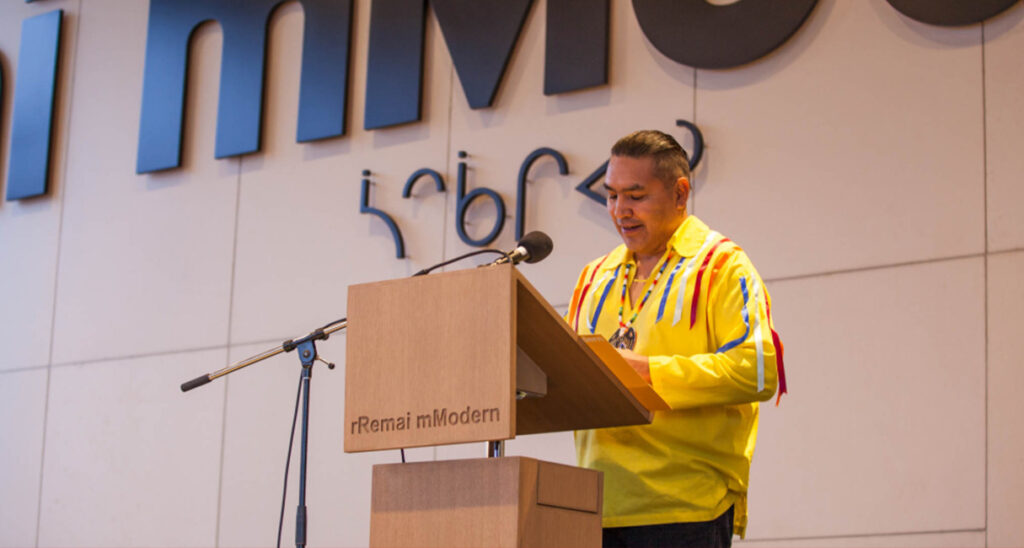
Remai Modern acknowledges the contributions of Nêhiyawak, Dakota and Round Prairie Métis peoples in establishing Saskatoon and we also acknowledge the Nēhîthâwâk, Nèhinawak, Denesųłiné, Nahkawē, Nakota and Lakota peoples in our province. We pay our respects to the ancestors and reaffirm our relationship with one another.
One of Remai Modern’s guiding principles is to work with Indigenous communities to create a plan for foregrounding Indigenous perspectives and self-determination throughout the organization.
Remai Modern is a settler colonial institution. As such, Remai Modern has an obligation to work toward greater understanding and improved relationships with Indigenous peoples. Remai Modern seeks to foreground Indigenous perspectives throughout the museum and be responsive to Indigenous perspectives, requests and ideas for change.
Remai Modern will work in the spirit of change and reconciliation and will do the work needed to make systemic and sustained change. Remai Modern acknowledges that making change is not a short-term proposition and that the process will extend beyond the five-year planning horizon of the museum’s current strategic plan.
In 1940, entrepreneur, philanthropist and art collector Frederick Mendel fled Nazi Germany and came to Saskatoon with his family.
He envisioned a place for the public to access art and culture, and in 1964, with buy-in from the city and province, the Mendel Art Gallery opened its doors in a modernist building on the banks of the South Saskatchewan River.
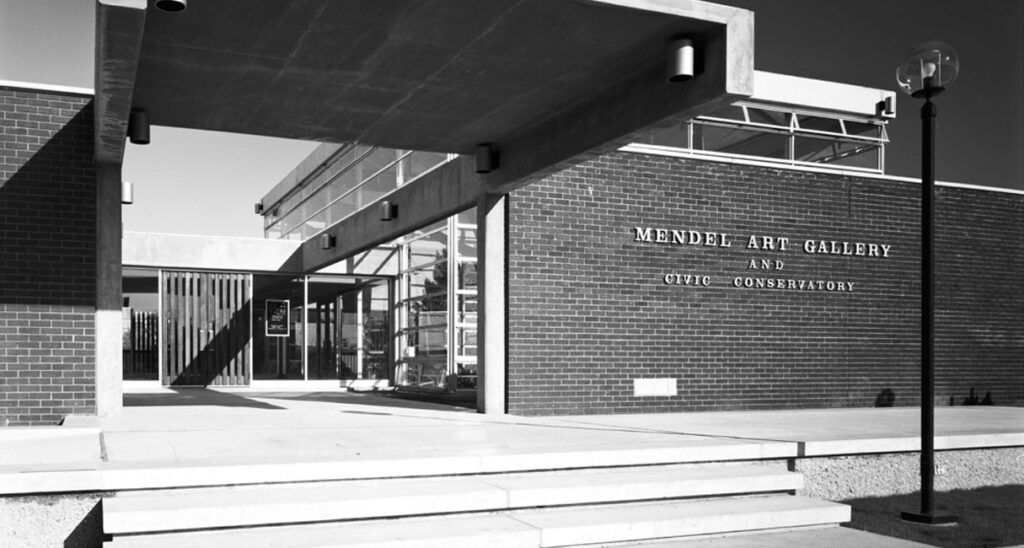
The inaugural exhibition featured works by international artists including Franz Marc, George Grosz, Juan Gris, Marc Chagall, Georges Braque, and Francis Picabia, and important Canadian modernists such as Emily Carr, Lawren Harris, William Perehudoff, and Eli Bornstein.
In 1965, the Mendel family donated 13 paintings to form the nucleus for the permanent collection, including work by prominent Canadian modernists. This foundational gift shaped five decades of collecting activity with strengths in Canadian and regional art practices.
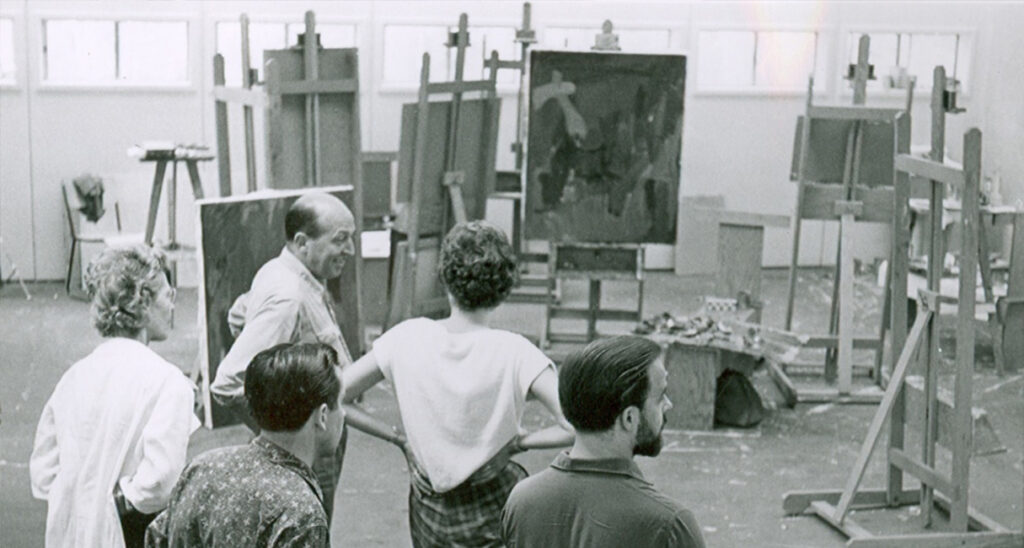
The collection now totals more than 8,000 works by artists of local, national and international significance. This valuable resource for research and exhibitions is called The Mendel Art Gallery Collection at Remai Modern.

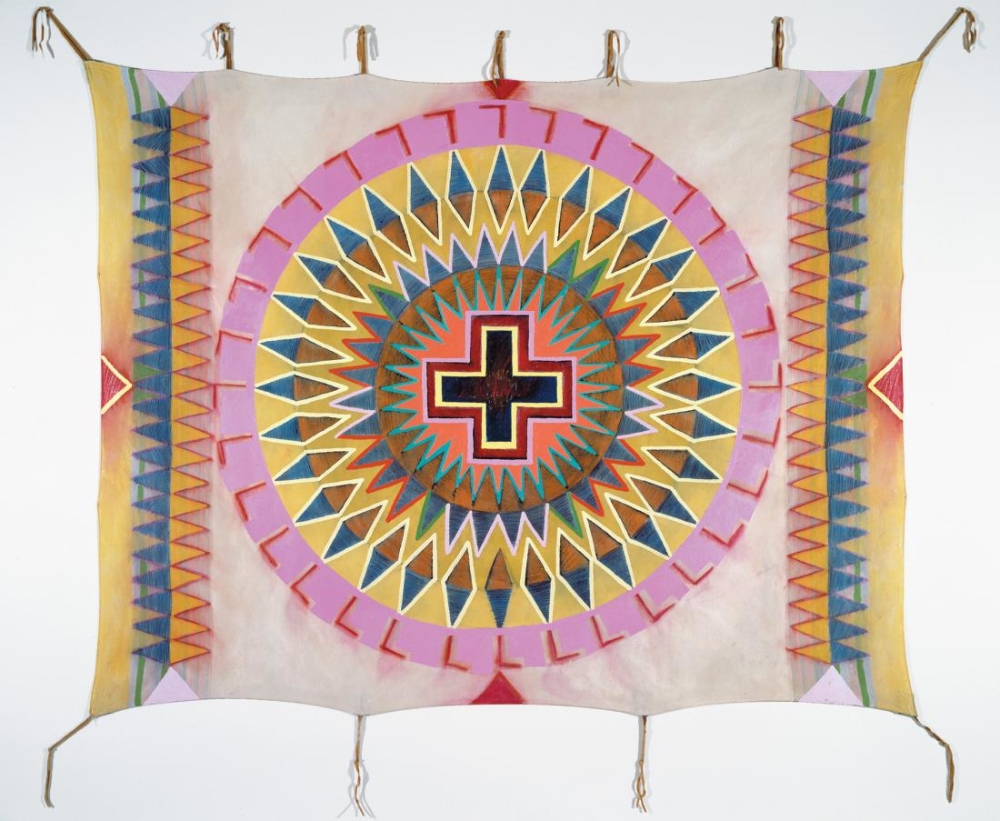
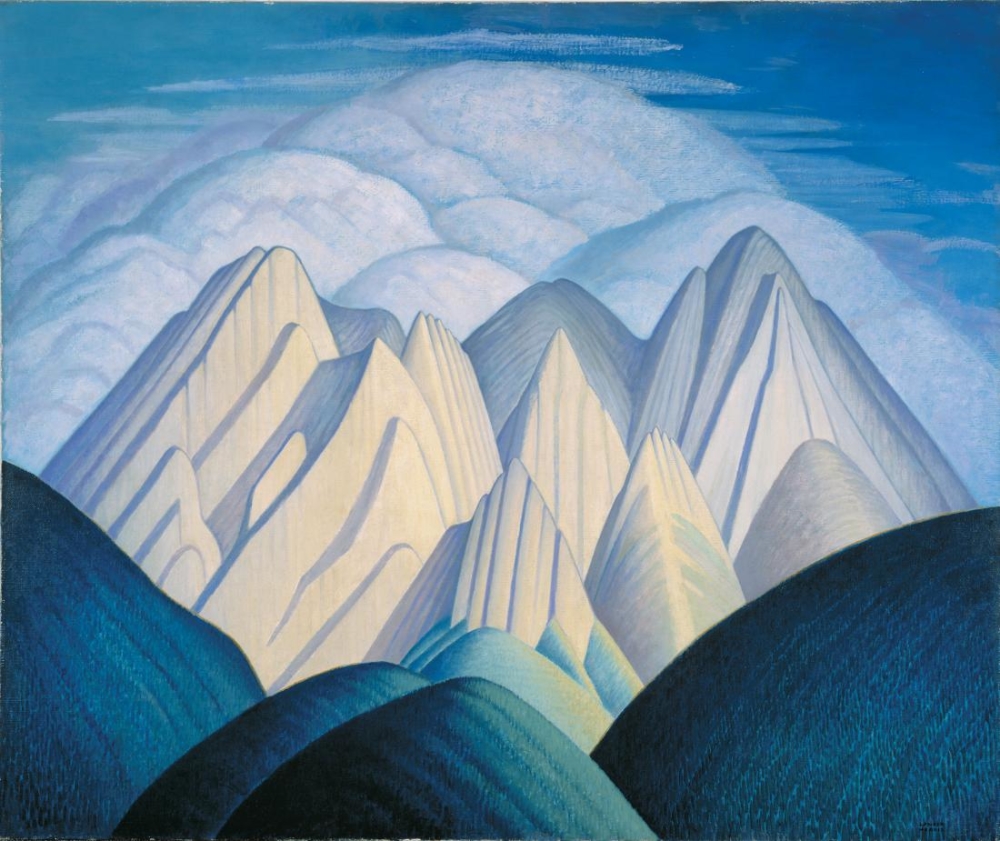
Between 1964-2015, the Mendel Art Gallery presented a unique and timely program, gaining a national reputation for its exhibitions and achieving one of the highest per-capita attendance rates in Canada.
In 2009, Saskatoon’s growth and the physical limitations of the Mendel prompted plans to build a new museum. In 2013, construction began on a site in south downtown, as part of a newly developed River Landing.
Saskatchewan’s art history demonstrates an often self-conscious and experimental attitude.
In the 1950s and 60s, influential modern artists and critics flocked to the Emma Lake artist workshops, just north of Saskatoon. Workshop leaders, including Clement Greenberg, Kenneth Noland, Barnett Newman, Donald Judd, Frank Stella, Anthony Caro and John Cage responded to the wilderness landscape and introduced new concepts. These retreats had a lasting impact on regional aesthetics, and fostered exchanges between Canadian artists and the international art world.
Generations of Saskatchewan artists have incorporated abstraction and the landscape into their work, alongside other visions of folk, pop, funk, new media and performance art.
Remai Modern’s new building was designed for transformative experiences.
The museum’s spaces were thoughtfully developed for art and people, recognizing that both are variable and unpredictable.
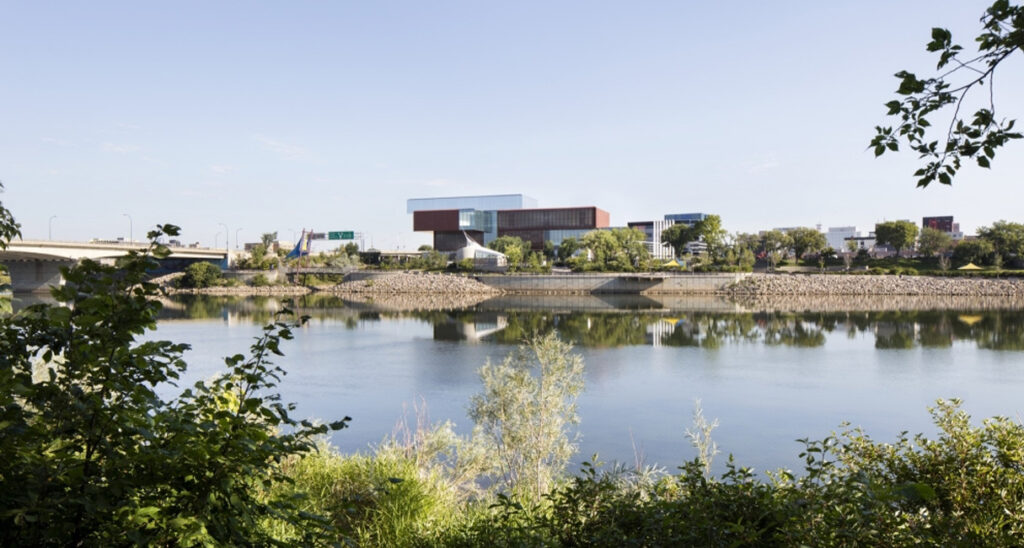
From its placement on the banks of the South Saskatchewan River, Remai Modern connects architecturally with a Prairie Modern style and responds to the low, flat topography of the landscape. Parts of the exterior are clad in a mesh screen of copper, a material inspiration from the nearby Bessborough Hotel, an architectural landmark built by the Canadian National Railway in 1932.

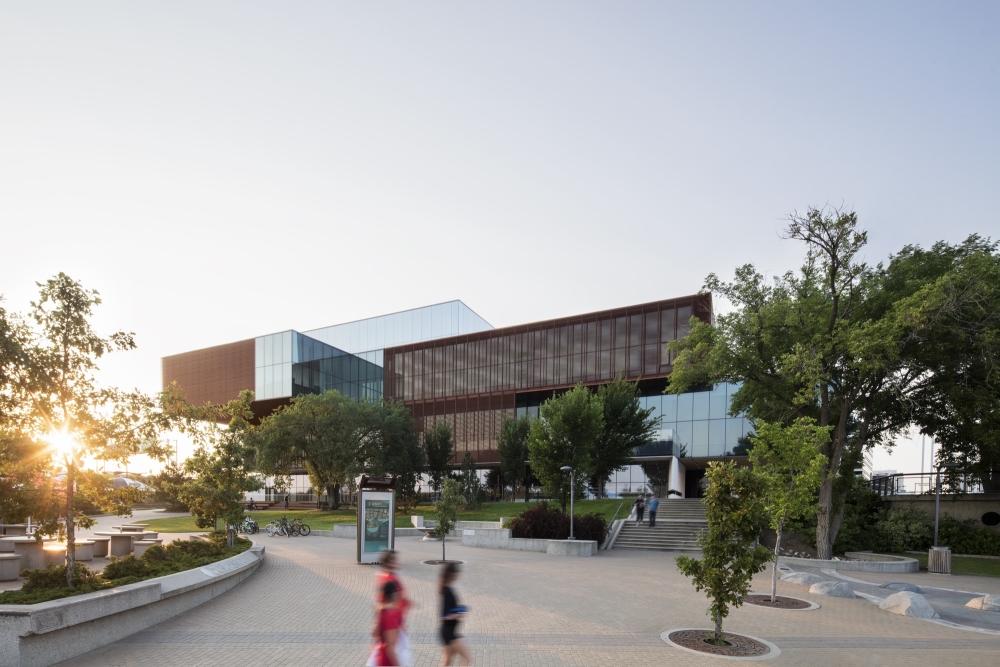
Inside and out, the museum has a human dimension, with sensitivity to materials, light and scale. It provides intimate spaces as well as dramatic expanses, with an atrium and outdoor terraces offering stunning views of the river and sky. Art experiences animate the building throughout.
The ground floor of the museum features the Connect Gallery and an active learning studio. This floor also provides a lively setting for gatherings, with a fireplace and open lounge areas. The floor is also home to the Art & Design Store, which offers must-have items from local, national and international artisans and makers. In early 2023, Hearth restaurant will open a new restaurant on the ground floor with dishes that celebrate Saskatchewan.
Levels 2 and 3 contain a variety of spaces for programming, including the Collection Galleries, Picasso Gallery, and sizeable spaces — the Marquee and Feature galleries — for temporary and touring exhibitions. Films, performances and talks are hosted in the 150-seat SaskTel Theatre.
A variety of multi-use spaces are found on every floor, and are available for performances, members’ nights, private rentals and community events.
Remai Modern’s building was designed by Bruce Kuwabara of the renowned Canadian architectural firm KPMB in partnership with the architect of record Architecture 49.
